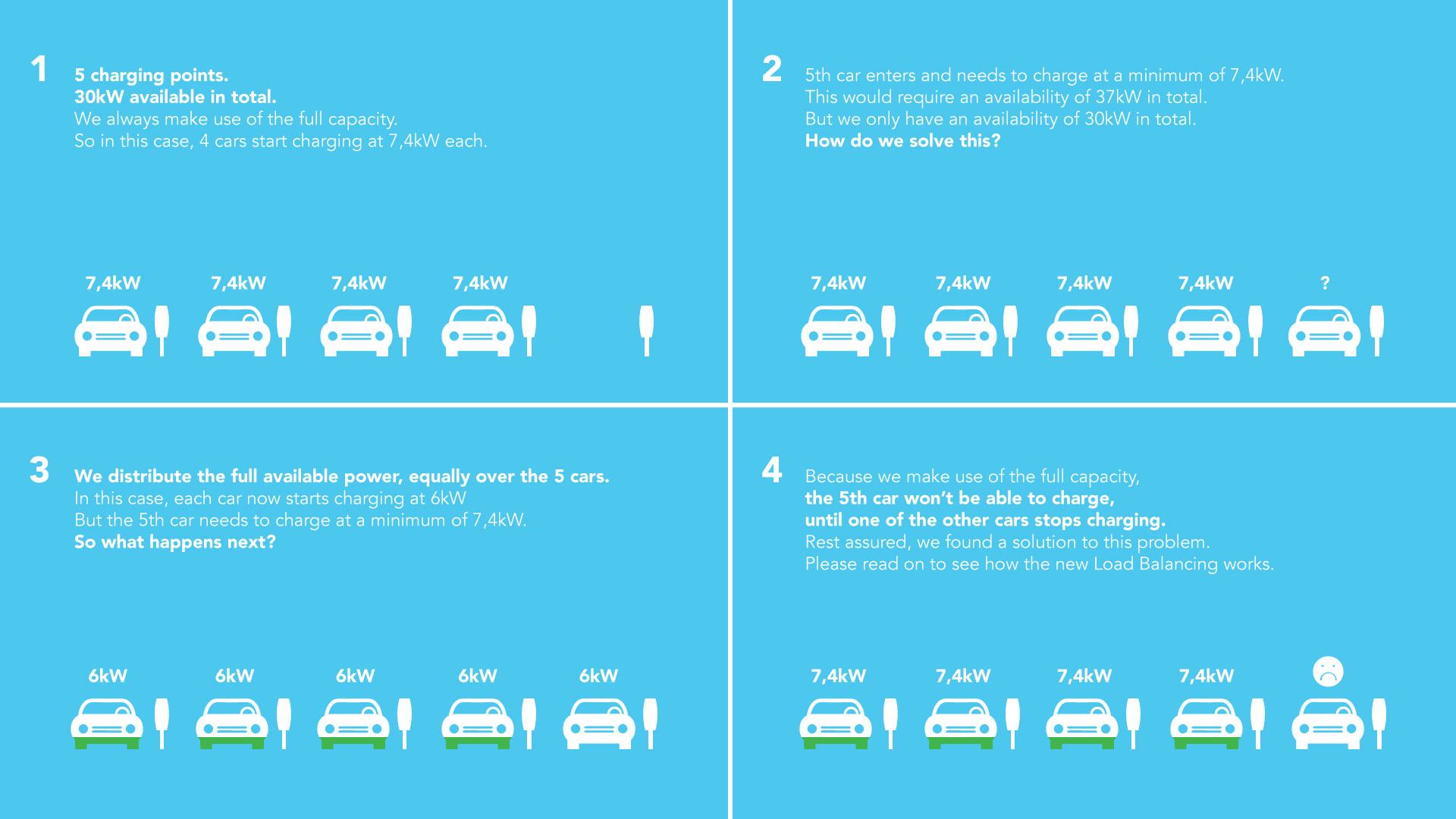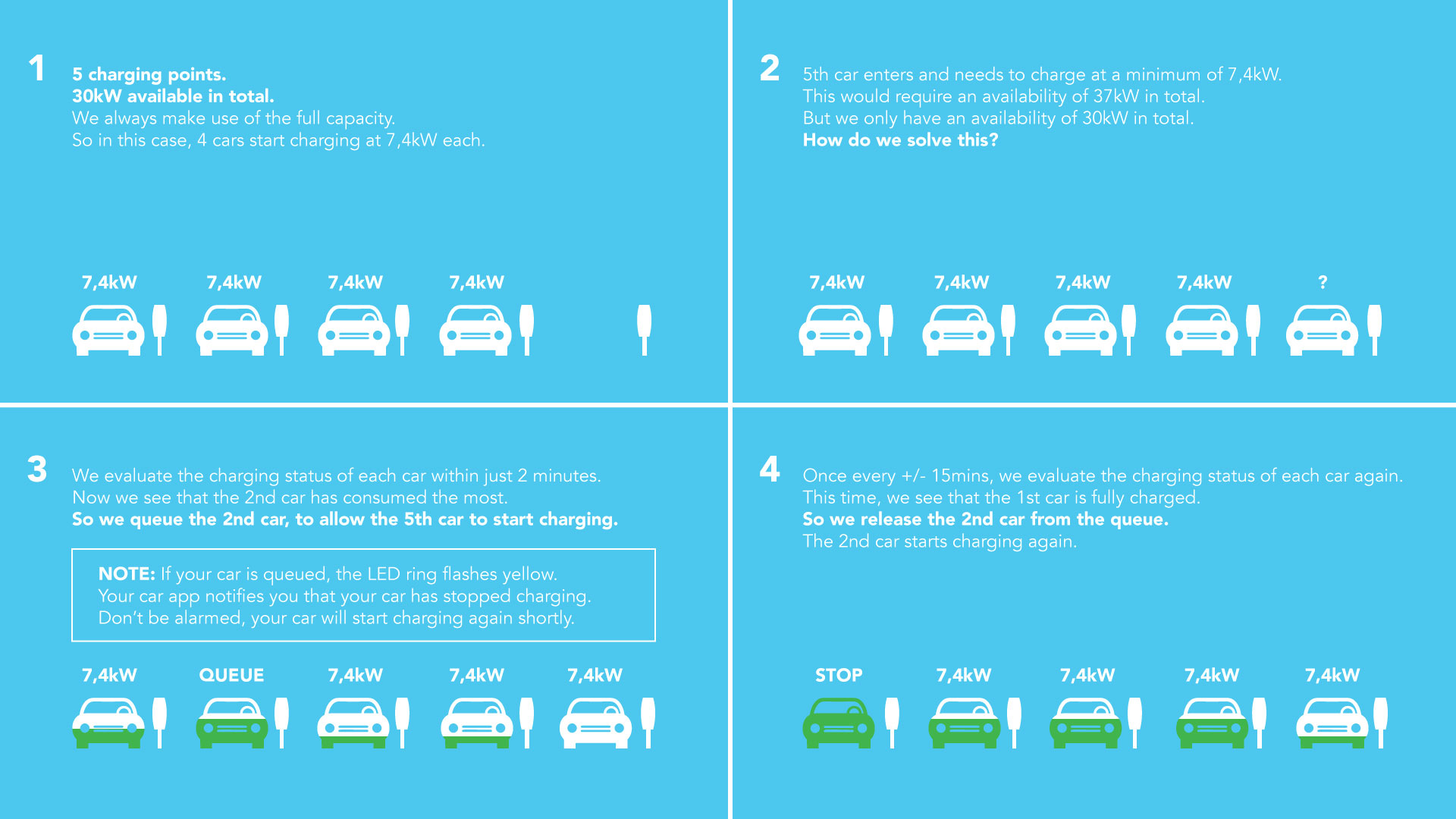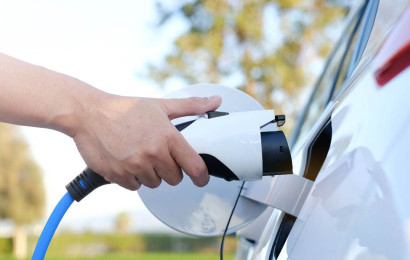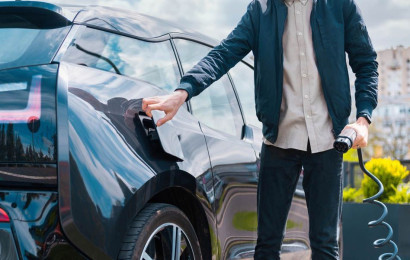Load balancing technology
Load balancing prevents overcapacity by distributing the available capacity equally over all charging ports at a given location. This makes it an important smart charging feature for anyone that operates multiple charging ports at a location with limited power capacity.
How does load balancing work?
Operating a charging station requires a power source (e.g. office building) to carry the cumulative sum of the total capacity of these charging stations. Load balancing distributes the available capacity proportionally over all active charging stations. In doing so, optimal charging is provided to all electric vehicles at your location, within the limits of your charging stations’ capacity.

Sample scenario:
A parking facility (power source) has a maximum of 30 kW available with five charging ports available. Four electric cars start to charge at 7.4 kW using the full capacity of power available. When a fifth car joins, there is not enough power to charge all five cars at 7.4 kW. This is where load balancing comes in and distributes the power equally so each car starts charging at 6 kW.
What is priority load balancing?
Priority load balancing distributes the available power capacity in a more flexible way to traditional load balancing. Rather than equally distributing power between multiple charging stations, power is distributed on a priority basis.

Sample scenario:
A parking facility (power source) has a maximum of 30 kW available with five charging ports available. Four electric cars start to charge at 7.4 kW using the full capacity of power available. If a fifth car joins and needs to charge at a minimum of 7.4 kW, the facility would require 37 kW of power, but we only have a 30 kW availability.
This is where priory load balancing comes into play. The charging status of each car is evaluated and it is identified that the second car has consumed the most power. Now the second car would be queued to allow the fifth car to start charging. Once every few minutes, the charging status of each car is evaluated again. This time, the first car is fully charged, so the second car is released from the queue and allowed to charge again.
If you would like to read more about dynamic load balancing, then head on over to our blog which covers the subject in more detail here.


